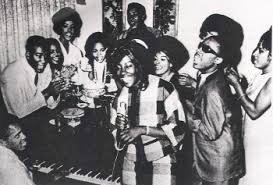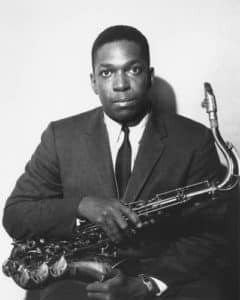R&B: The Third Stream

The third stream of R&B music introduced the world two sections such as the Motown Sound and Memphis Sound of R&B.
Background
Rhythm and Blues is a form of Black dance music that evolved during the World War Two era and the two decades that followed as a fusion of blues, big band swing, gospel, and other pop elements. Moreover, there are many aspects and factors to R&B. Therefore, each period of time has its unique qualities. The first stream of R&B took place from the 1940s to the mid 1950s; it revolves around regional sound and styles. The second stream took place from the mid-1950s to the mid-1960s; it introduced the sounds of New Orleans, the sounds of Chicago, and more. The third stream took place from the 1960s to the mid-1970s. This “era” of R&B introduced new regional sounds. Next, the fourth stream took place from the 1970s to 1980s; during this period, many transitions took occured. Lastly, the fifth stream took place from the 1990s into the New Millennium. It features many elements such as the spoken word style of R&B.
The Third Stream
The third stream of Rhythm and Blues took place from the 1960s to the mid-1970s. Furthermore, the third stream of R&B music introduced the world to new regional sounds such as the Motown Sound and Memphis Sound of R&B. “Stop in the Name of Love” by The Supremes, “How Sweet It Is to Be Loved By You” by Marvin Gaye, “Respect Yourself” by The Staple Singers, and “Who’s Making Love” by Johnnie Taylor are just four songs of a plethora of songs that were released during this era of R&B.
The Motown Sound
The Motown Sound of R&B music took place during the 1960s to mid-1970s. This sound revolved around musical arrangements, which applied new concepts to the use of strings in rhythm and blues that drew Black aesthetic values. For example, Motown’s arrangements used strings as a timbrak layer with syncopated horn lines for a fuller sound. In addition, vocal, guitar, and bass lines were doubled. Alongside these characteristics, the riffs of the rhythm section were played off in this “era” of R&B music.
Motown Records is a record label created by Berry Gordy. It was named for its original location in Detroit, MI, which is also known as “Motor Town.” Detroit possessed a vibrant musical scene that featured rhythm and blues, alongside more genres of music such as jazz, blues, and gospel. Furthermore, Gordy signed several young artists to Motown records.
Moreover, Motown’s early recordings phase combined vocal harmony groups and uptown rhythm and blues traditions. The company’s artists were diverse. There were solo singers, duos, combos, and vocal harmony groups. However, the vocal harmony groups dominated during the 1960s, which was the beginning of phase two. Gospel, jazz, and pop elements became pronounced to create a more distinctive sound for Motown.
Since the artists signed to Motown Records were young, their music reflected their youthful and urban experiences which drew in a youthful audience during the mid-1960s.
Overall, the Motown Sound reflected Black aesthetic values such as vocal timbre, style, and overall group texture, which mirrored their personal musical preferences.
Stax Records and the Memphis Sound
The Memphis Sound of R&B music took place during the 1960s to mid-1970s. This sound also revolved around musical arrangements, which applied new concepts to R&B music. For example, the blues, rhythm and blues, and rockabilly styles were blended together to form a unique southern sound.
Stax Records is a record label founded in1959 by Jim Stewart in Memphis, TN. Stewart relocated his recording studio that was in his garage to an abandoned theater in the Black community. Moreover, following this, several artists were attracted to Stewart’s open door policy. As a result, a few instrumentalists came together and became Stax’s studio band; they were an integrated group known as Booker T. & the MGs. Furthermore, they blended blues, rhythm and blues, and rockabilly styles, and added the horn section from Mar-Keys, an integrated instrumental combo. These characteristics established the Memphis Sound.
Moreover, Memphis Sound is an urban sound with rural underlying feeling/influence. This “era” of R&B music was spontaneous, gritty, and warm with the laid-back rhythm and blues, rockabilly styles, horn riffs, and harmonies. Furthermore, the song lyrics expressed life experiences, relationships, and social issues of the artists in the segregated South.
Solo artists dominated the Stax Record Company; they were about fifteen to twenty-two years old. The company’s earliest recordings incorporated rhythms and vocal styles from gospel because they became more intense during the mid-1960s as did Soul music, which is a gospel-influenced African American music style.
In conclusion, although every stream of R&B is important, the third stream of Rhythm and Blues introduced new sounds and concepts such as musical arrangements to R&B music. More specifically, the Motown Sound and Memphis Sound introduced new elements during the 1960s and mid-1970s.
Works Cited
Burnim, Mellonee V, and Portia K. Maultsby. African American Music: An Introduction. , 2015. Print.
More Posts by the Author

The Two Waves of Detroit Techno Music: Techno and Rave!
The Two Waves of Detroit Techno Music: Techno and Rave! Techno, house, and rave (electro) are the primary forms of electronic music in Detroit. Though
Women of the Blues: Bessie Smith
Women of the Blues: Bessie Smith The Blues genre did not only include black men. Black Women significantly contributed to the sound of the blues.
A Century of Gospel Music
A Century of Gospel Music Gospel music is the form of African American religious music. It is a willful expression of the desire of African
Ciara
CIARA Who is Ciara? Ciara Princess Wilson (aka Ciara) was born on October 25, 1985 in Fort Hood, TX. Ciara does it all. She is

A Musical Narration: “Psalm” from “A Love Supreme”
A Musical Narration: “Psalm” from “A Love Supreme” John Coltrane turned his handwritten poem “Psalm” into the final song on his “A Love Supreme” album.

